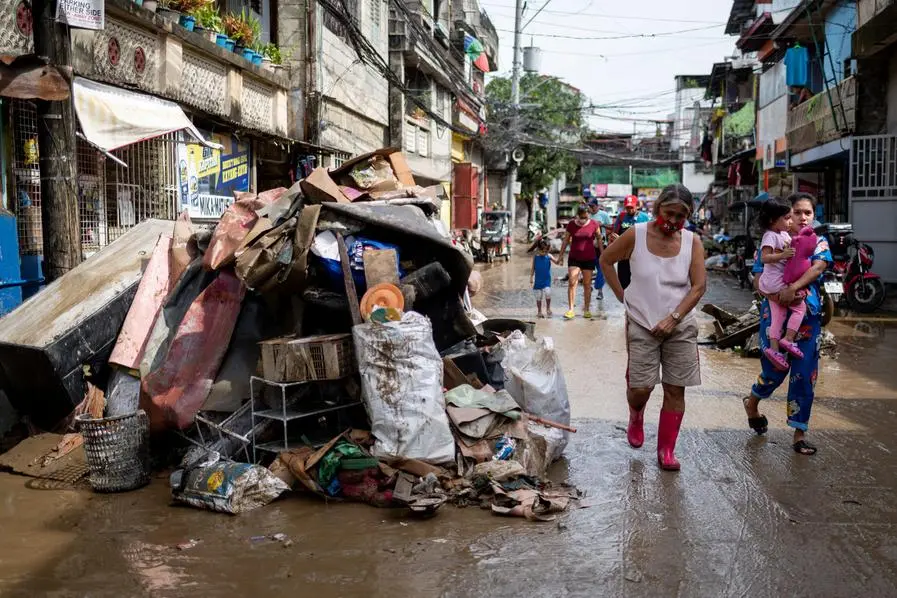PHOTO
A new international report found the Philippines to have the highest disaster risk from natural hazards among 193 countries.
From eighth last year, the Philippines topped this year's World Risk Report released by Germany-based Bndnis Entwicklung Hilft and the Institute for International Law of Peace and Armed Conflict at Ruhr University Bochum (IFHV).
'Floods, heat waves and droughts are increasing seriously, and climate change is also having a massive impact on the assessment of risks,' said Peter Mucke, project manager at World Risk Report 2022 and executive director at Bndnis Entwicklung Hilft.
'For a country's risk of an extreme natural event turning into a disaster, natural and climate-related exposure forms the first part of the equation. The second part is what is known as the vulnerability of society. This vulnerability is the factor of risk that can be directly influenced,' he said.
Released annually since 2011, the World Risk Index indicates countries' disaster risk from extreme natural events and negative climate change impacts.
It is calculated based on exposure of populations to extreme natural events and the vulnerability of social domains to natural hazards and negative impacts of climate change.
Based on the study, the Philippines obtained an overall disaster risk score of 46.82 out of 100, the highest among the countries included in the index.
It scored 'very high' across all indicators, including exposure (39.99), vulnerability (54.81), susceptibility (51.35), lack of coping capacities (57.81) and lack of adaptive capacities (55.48).
Following the Philippines were India (42.31), Indonesia (41.46), Colombia (38.37), Mexico (37.55), Myanmar (35.49), Mozambique (34.37), China (28.70), Bangladesh (27.90) and Pakistan (26.75).
Monaco and Andorra were identified as the countries with the lowest disaster risk with an overall score of 0.26, followed by San Marino (0.38), Sao Tome and Principe (0.48), Luxembourg (0.52), Liechtenstein (0.79), Singapore (0.81), Malta (0.94) and Bahrain (0.95).
According to the authors, the index this year has been completely revised conceptually and methodologically.
'The World Risk Index now comprises a total of 100 indicators instead of the previous 27. In particular, the inclusion of indicators on how populations have been affected by disasters and conflicts in the past five years, as well as on refugees, displaced persons and asylum seekers in the new index - also against the backdrop of the major global migration movements - results in a significantly more accurate representation of the realities of life in many countries,' said Daniel Weller of IFHV.
'In addition, the 'exposure' component has been significantly expanded: while earthquakes, hurricanes, floods, droughts and sea-level rise were taken into account in the previous World Risk Index, tsunamis are now added, and a distinction is made between coastal and riverine flooding,' he added.
The report also looked at how digitization is being used for disaster preparedness and management, such as in knowledge acquisition, information dissemination, communication and control.
'Examples include the use of global databases for risk analysis, digital early warning systems, apps for recording damage and communication with those affected via social media platforms,' read the report.
'With the rapid digitalization of disaster management, new weak spots and vulnerabilities are inevitably emerging. To counter these new vulnerabilities and to maintain the integrity of disaster relief, proactive leadership, digital security training, technical legal knowledge and cybersecurity investments are essential,' it added.
Copyright © 2022 PhilSTAR Daily, Inc Provided by SyndiGate Media Inc. (Syndigate.info).




















